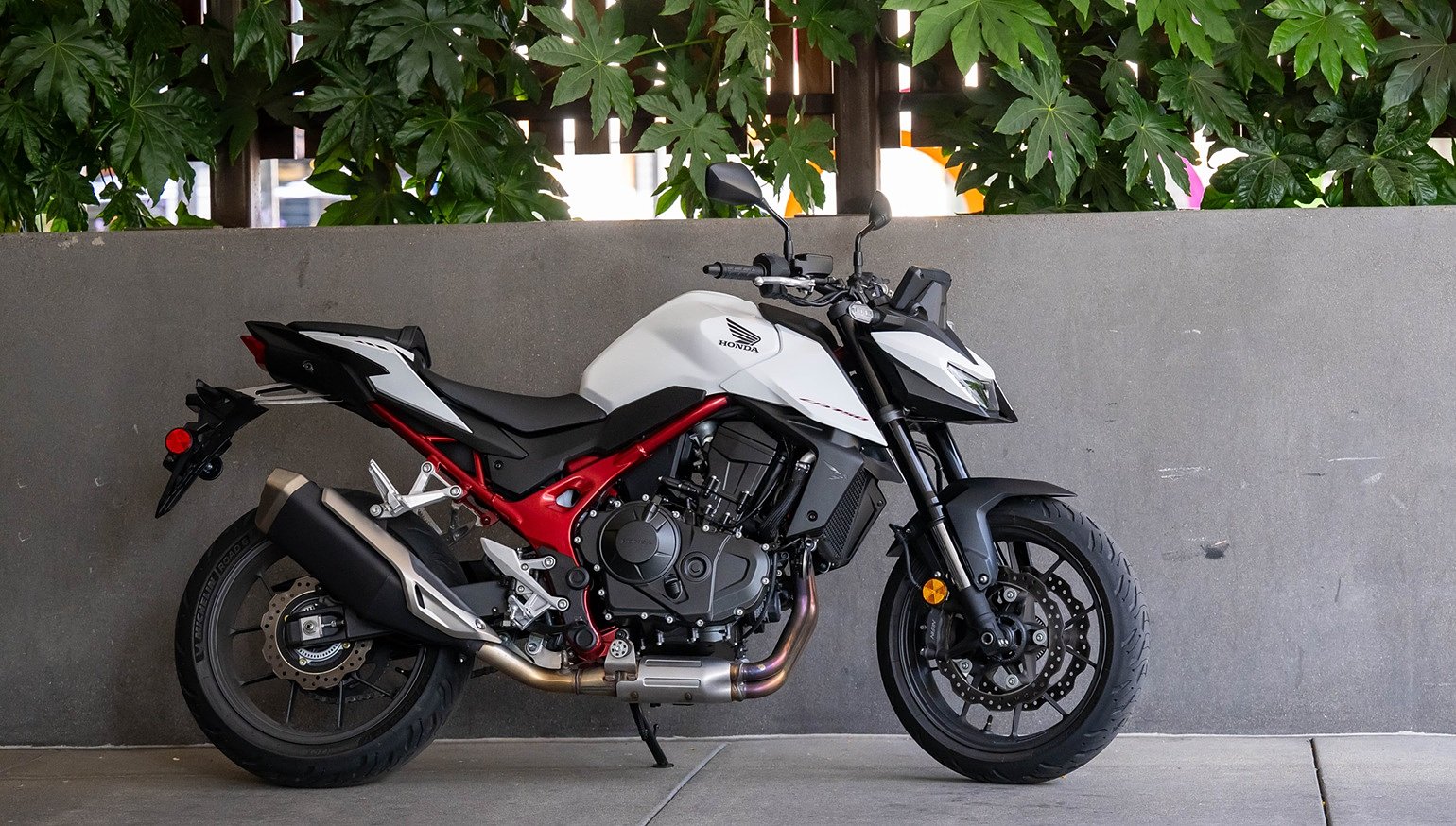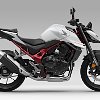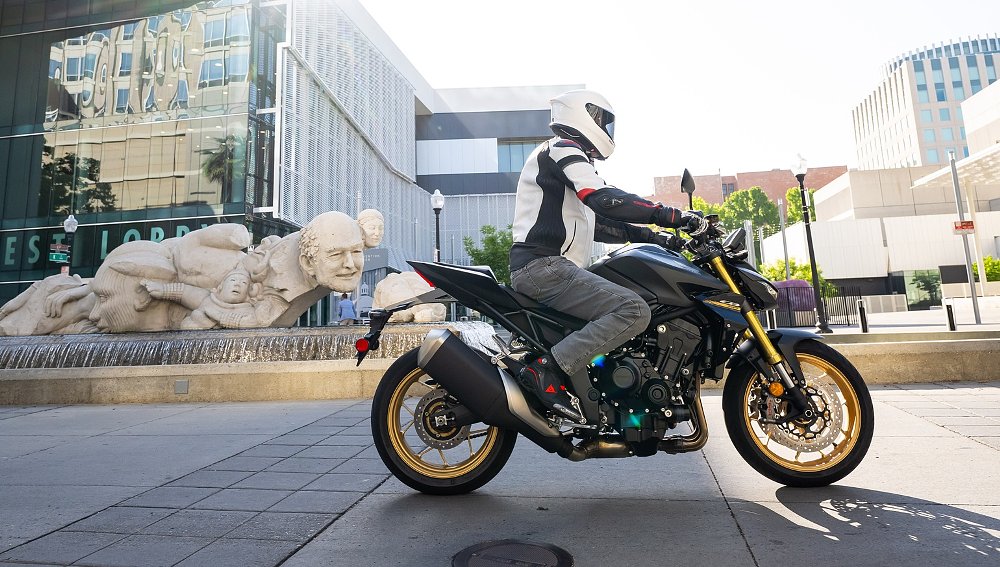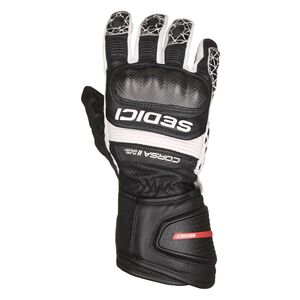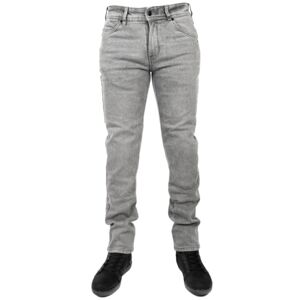One complaint I sometimes have with the manufacturers is when they unveil a new model and tell us they'll reveal the price later. As a writer, I just report the facts, but as consumers, how are we supposed to know if we're interested in something without knowing what it costs? I mean, at a certain price point, any motorcycle is attractive (unless it's radioactive, offer me a motorcycle for $1 and I'll buy it) and at another price point no motorcycle is attractive (I'm never spending $110,000 for one).
No such issues when Honda introduced the 2025 CB750 Hornet to the U.S. motorcycle media last week in California. "One of the most important story lines about these bikes are the prices," said American Honda Powersports PR Assistant Manager Bradley Adams, referring to both the CB750 and the CB1000 Hornet SP also coming to the United States this year.
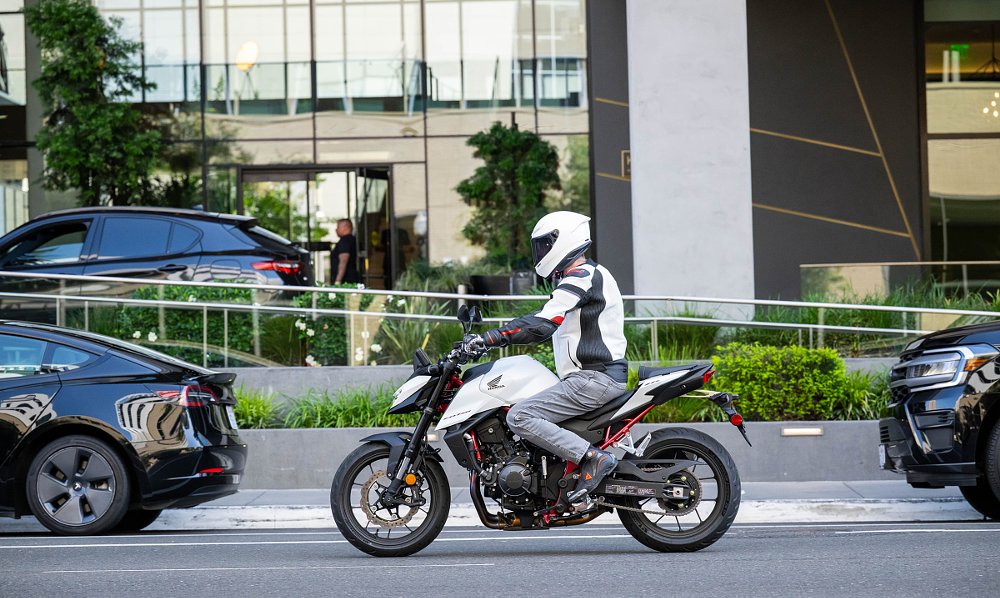
With the CB750 Hornet you get a light and nimble street bike with ample power and the tech you probably want — ABS, traction control, three ride modes, a quickshifter, slipper clutch, Bluetooth connectivity through Honda's RoadSync app, a five-inch TFT display — but without the cost of the extra frills many of us could do without. Here's a built-in-Japan motorcycle not from some brand with little history and sketchy dealer support in the U.S. market, but from the most successful motorcycle manufacturer in the history of the world, with an MSRP of $7,999.
Of course none of this is news to Common Tread readers in other parts of the world, where the Hornet is already popular. But since it's new to United States, here's a quick briefing for U.S. readers who are asking, "What's a Hornet again anyway?"
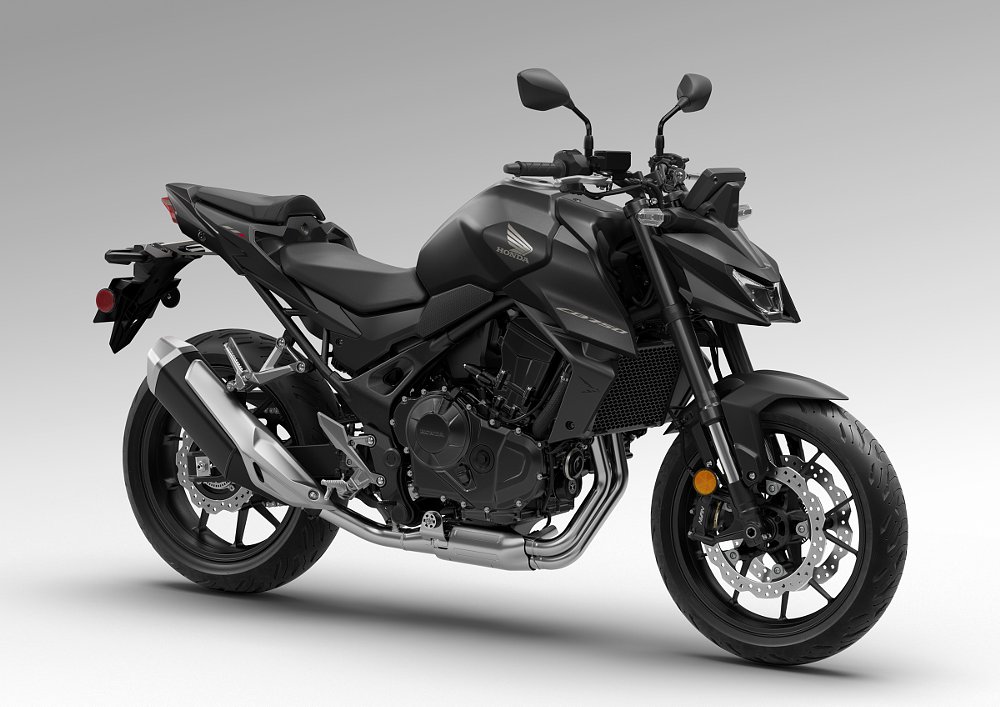
The Hornet migration to North America
Two years ago, when we wrote about motorcycles in other markets that weren't available here in the United States, the Honda CB750 Hornet was prominent on the list. Introduced in 2023, the CB750 Hornet quickly became a top seller for Honda in Europe.
U.S. riders may be less familiar with the Hornet name than the rest of the world, in part for legal reasons and in part because this is not the first time Honda made us wait. The first Hornet was a Japan-only CB250 model that came out in 1996. The CB600F Hornet and CB900F Hornet came out in 1998 and 2002, respectively, in other markets, and while the we got the 900 right away, the 600 didn't arrive until 2004. Having trouble remembering a Hornet model from those years? That's because they were called the 599 and 919, because Chrysler owned rights to the Hornet name in the United States. This time around, Honda was able to negotiate use of the Hornet name. Part of that deal was letting Ram use the Rebel name on one of its pickup trucks.

Hornets (at least the Honda species) have a certain look: broad at the shoulders, narrow at the waist, and pointy at the tail. Not only is the CB750's fuel tank wider at the front and narrower near the seat, but the shrouds around the radiator also add to the broad-shouldered look. The LED headlight and cowl are redesigned for 2025. Styling has changed a lot in two decades, and Hornets have evolved. The 599 and 919 could be called plain, while today's Hornet has sharper lines and a decidedly more aggressive and modern look.
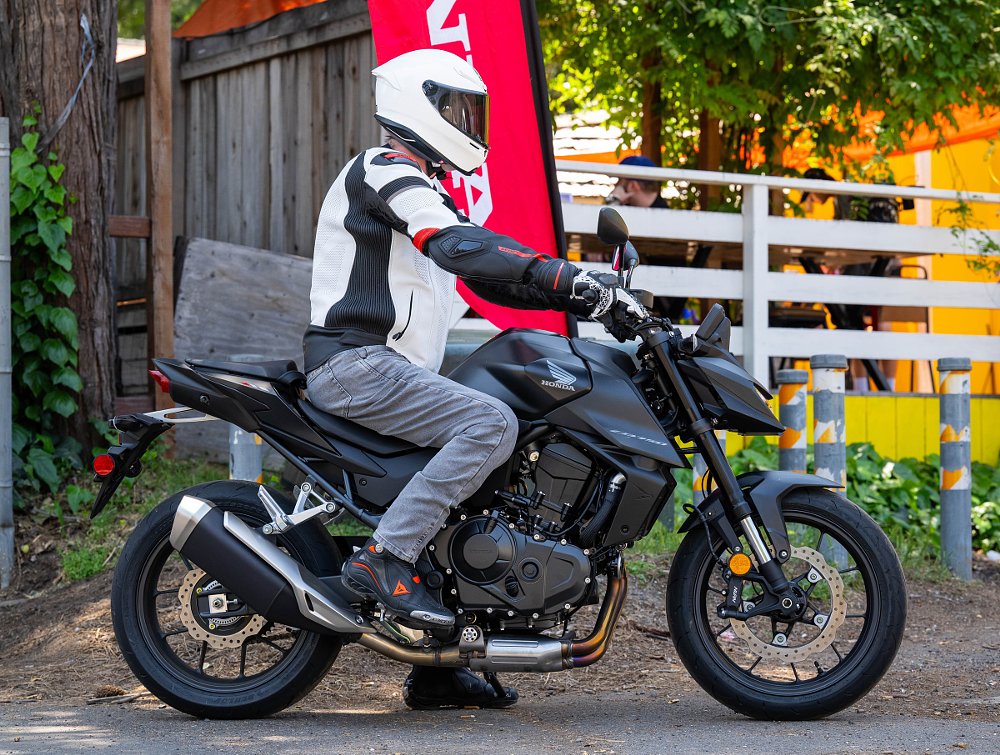
The other side of Hornet DNA is the combination of a punchy engine and agile handling to go with the competitive price. Honda says the 755 cc, 270-degree twin was designed for use in the Hornet but pressed into duty in the Transalp. Since we got the Transalp a year earlier here in the United States, we might have assumed the opposite. The twin uses Honda's Unicam design to keep the head compact. The cylinders are plated with nickel-silicon carbide for reduced friction. Twin balancer weights help reduce vibration.
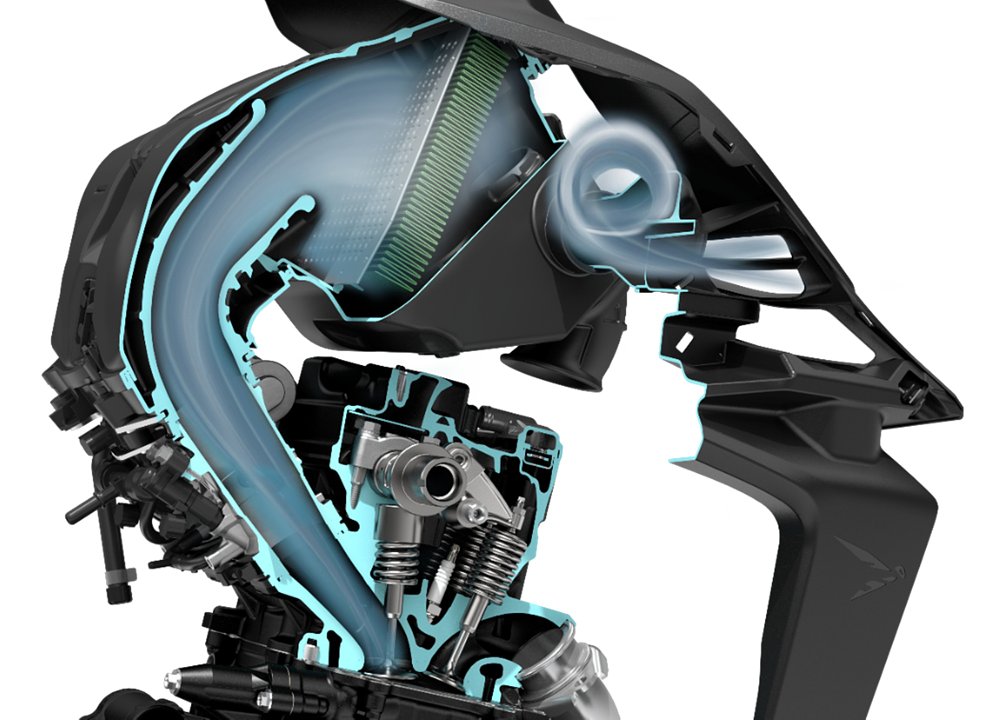
Managing the engine is a set of electronic aids that feels, to me at least, like the right amount, not an excess of options that complicates things unduly. The CB750 Hornet comes with three preset ride modes, Standard, Sport, and Rain, and two user modes that can be customized. The ride modes set three parameters: three levels each of power delivery, traction control (HSTC, or Honda Selectable Torque Control, in company nomenclature), and engine braking. For example, Standard chooses the middle level of all three parameters. Sport chooses the lower levels of traction control and engine braking and the most aggressive level of power delivery. The three "Power" settings do not change the level of maximum power, but rather the way it's delivered, from a softer to a more urgent throttle response.
You can set the two user modes to your preferences for those three parameters, and the user modes also give you the option to turn off traction control completely, should you want to ride without the safety net or if you want to do wheelies, because wheelie control is incorporated into traction control. But there's a catch. While your user mode settings for power delivery and engine braking will remain the same, the user mode will reset the traction control to the lowest setting every time the motorcycle is powered off. In other words, you'll have to go into the menu and turn off traction control every time you turn on the key.
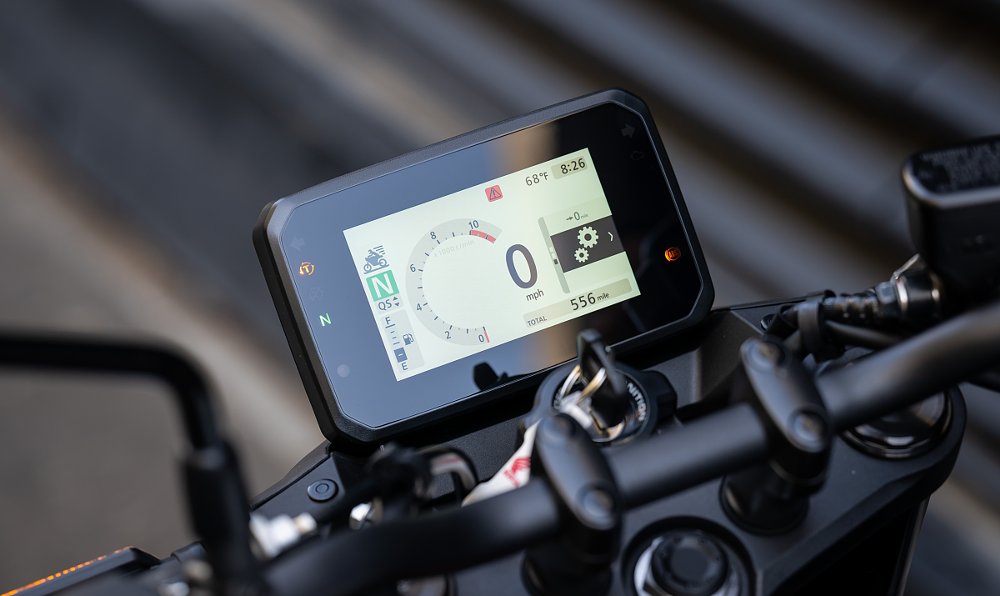
The SP also comes stock with a quickshifter that can be adjusted to three settings independently for upshifts and downshifts. All these adjustments are accessed through the five-inch TFT display, which can be set to three different layouts and your choice of a light or dark background. After reading Dustin's recent report on the Honda NT1100, which has 17 buttons on the left switchgear, I was worried I might spend more time pressing buttons than shifting gears, but fortunately it's a simpler and easier process to access the Hornet's settings. A separate mode switch allowed me to change ride modes on the fly and a single four-way switch made navigation through the menus reasonable.
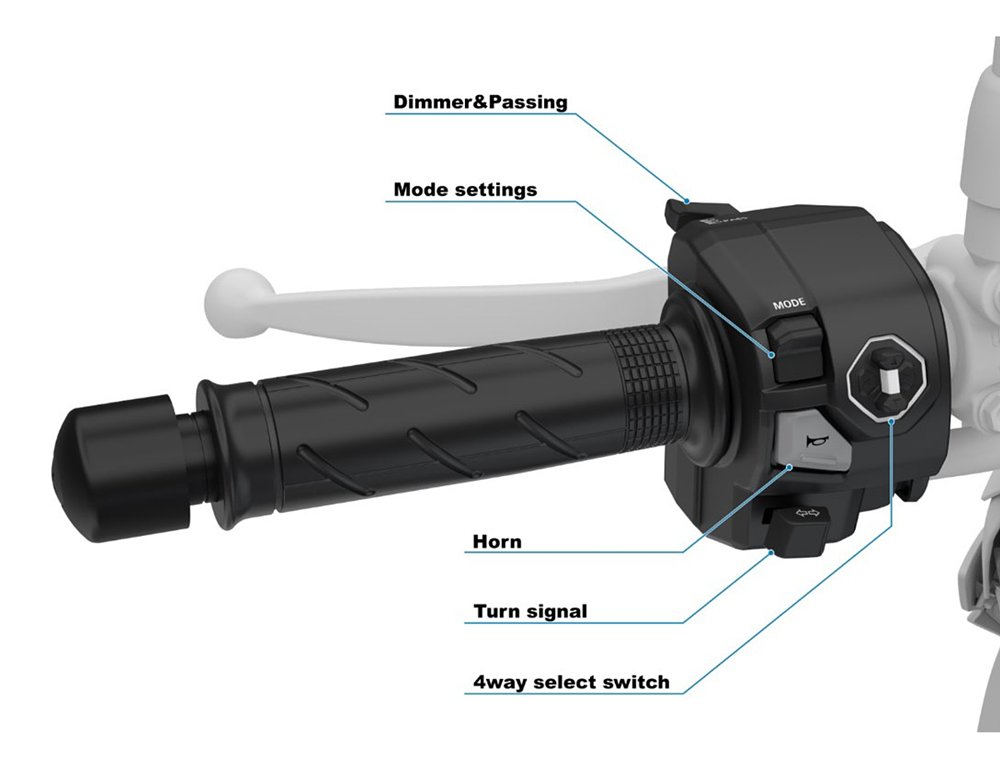
The Hornet also comes with Honda's RoadSync, which allows you to connect your phone to the bike for calls, music, voice directions, etc. I didn't have a comm unit in the new helmet I took on this ride, so I wasn't able to test the voice connections.
Looks promising on paper, but what's it like on the road?
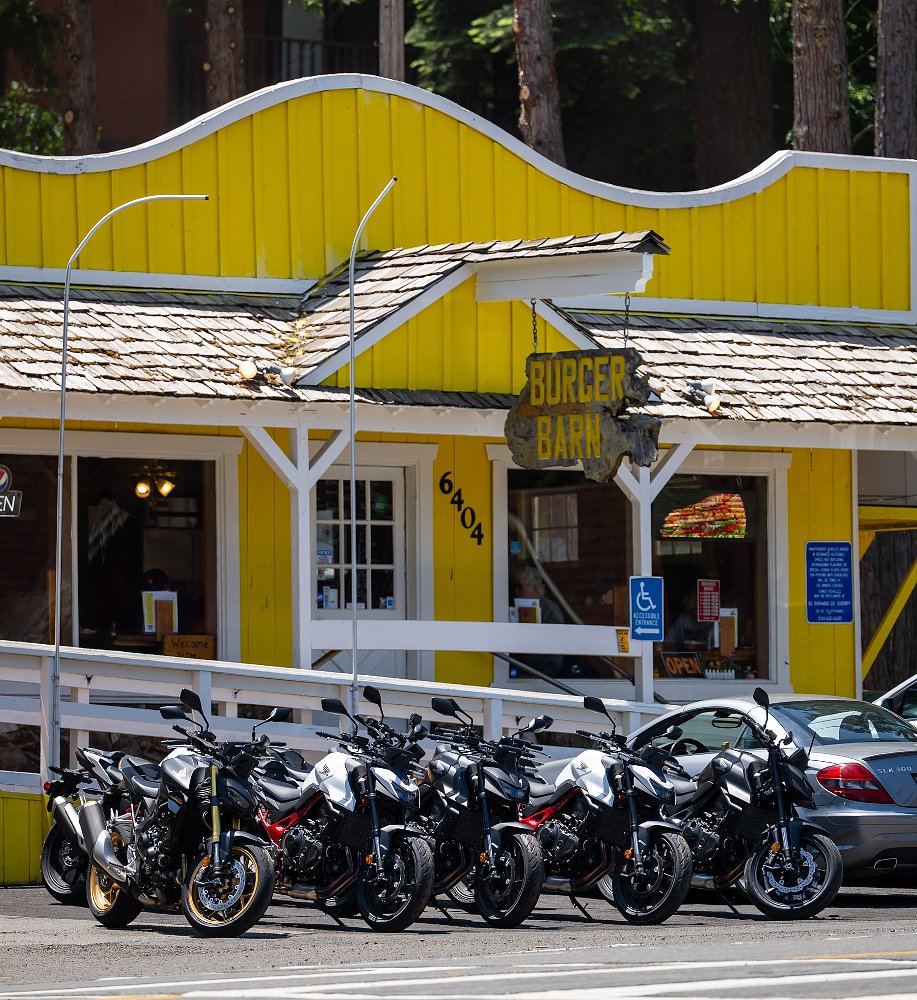
Riding the 2025 Honda CB750 Hornet
I got to ride the CB750 Hornet and its liter-class sibling on separate days on rides that I imagine are a lot like what a typical Hornet owner might take on a weekend. From our base in downtown Sacramento, California, we rode east into the hills and past the lakes of Gold Country, stopping for some photos, a coffee break, and lunch. That meant we experienced a little city traffic, some freeway riding, some suburban sprawl, and then some delightful curving hill roads. The latter ranged from faster sweepers to series of tight hairpins, from dreamy-smooth sections to stretches where tree roots rippled the asphalt. In other words, a good test of a motorcycle that's supposed to be all-around capable.
The first question was how the Hornet would handle freeway riding, considering the buzziness of some twins and the Hornet's complete lack of wind protection. As for vibrations, I only felt a slight and unbothersome buzz through the footpegs at the top of the rpm range. The balancers are clearly working, the CB750 feels smooth for a twin, and the particularly tall sixth gear that Honda selected helps when you're just covering miles. As for wind management, when I first looked at that TFT display sticking up at an angle, I wondered if it would ruffle the airflow. Verdict? No issues. I appreciate good wind protection as much as anyone when I'm on a long freeway ride, but I'd rather have the smooth air flow of a naked bike rather than the not-so-good wind protection on some motorcycles that causes buffeting. In any case, long freeway rides are a suboptimal application of this motorcycle's strengths.
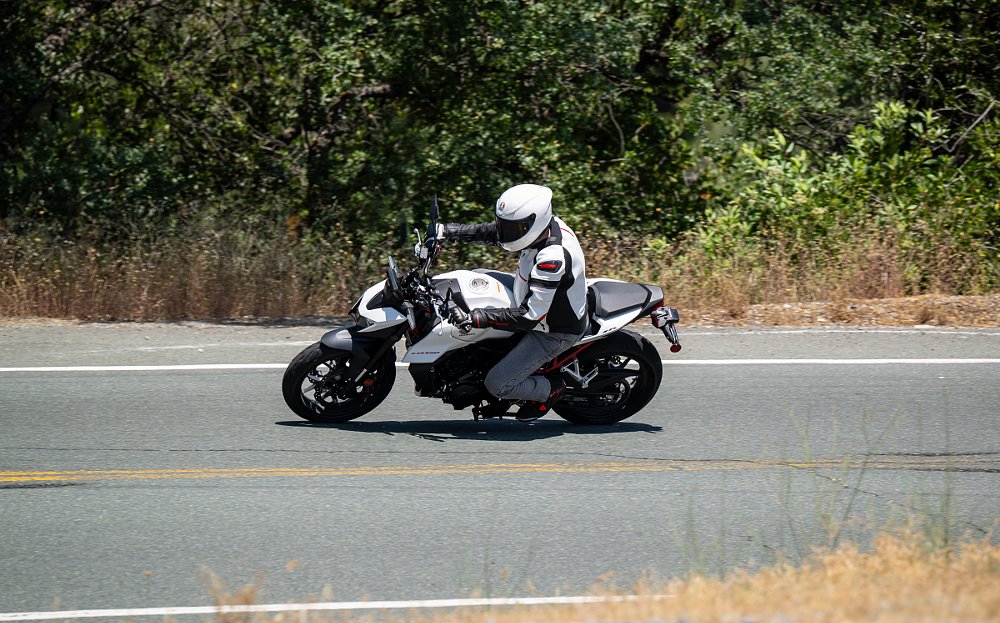
That's because the dominant feeling with the CB750 Hornet is one of nimble agility, and once we escaped the freeway and the suburbs, our route took us on some tightly coiled hill roads where we could take advantage of those signature Hornet traits. Rake and trail are sporty, but not extreme. The upright position and wide handlebar provides leverage for steering inputs and the footpegs are right where I want them for shifting my weight. Even Honda's choice of a 160-section rear tire instead of the 180 found on some competing models seems aimed at fulfilling the promise of agility implied by the Hornet name.
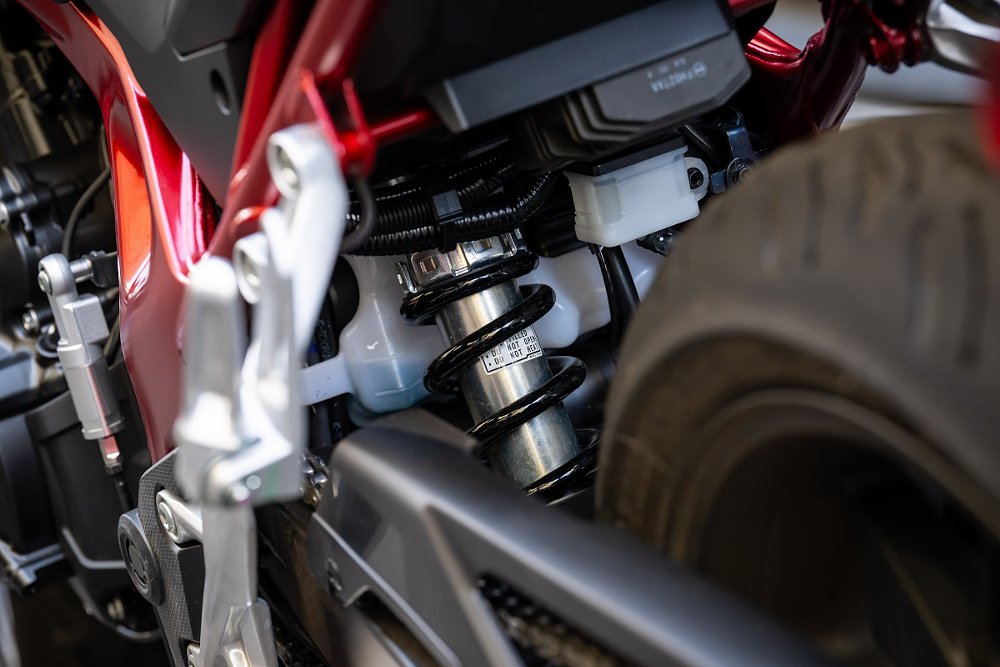
The inverted Showa SFF-BP fork and Showa rear shock are not adjustable, except for preload on the rear, and with the shock tucked so deep inside the motorcycle, even adjusting that is not going to be simple. The Honda tech standing by to make any adjustments we asked for was packing a spanner more than a foot long so he could easily reach the collar on the shock. But here's the thing. For me, at least, nothing needed adjusting. If you read my CB1000 Hornet SP review, you know I was taking full advantage of the adjustability of the higher spec Öhlins shock, ultimately to good effect. But for me, at 175 pounds minus gear, the settings on the CB750 Hornet were fine out of the box. Sure, I noticed the joints in the freeway when we were escaping the city, but that firmness in the suspension settings felt just right when we dived into the curves.
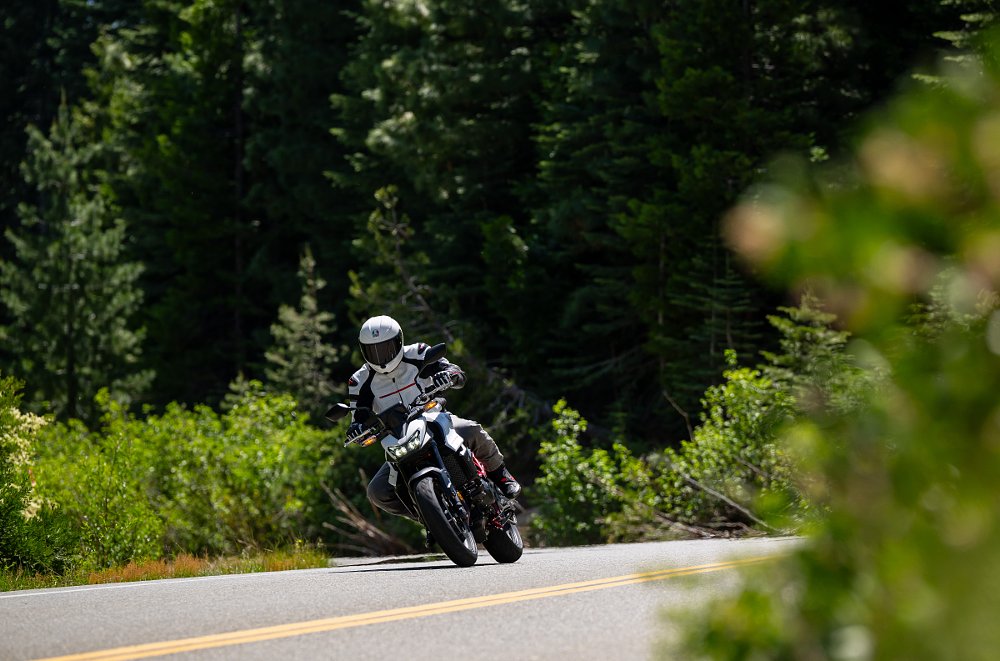
The slipper clutch offers a light pull, and because the quickshifter comes standard you don't have to use it as often, anyway. At first, I thought the glitch in the CB750's performance was the quickshifter. As mentioned above, the rider can choose three settings for the quickshifter. Before the ride, the Honda guys told me they prefer the soft setting, so that's how our machines were set up. To my surprise, downshifts were good enough but upshifts were noticeably more difficult and clunky. At our first stop, I waded into the settings menu and discovered that on my particular bike downshifts were set to soft but upshifts were set to hard. I changed the upshift setting to soft and things greatly improved the rest of the day.
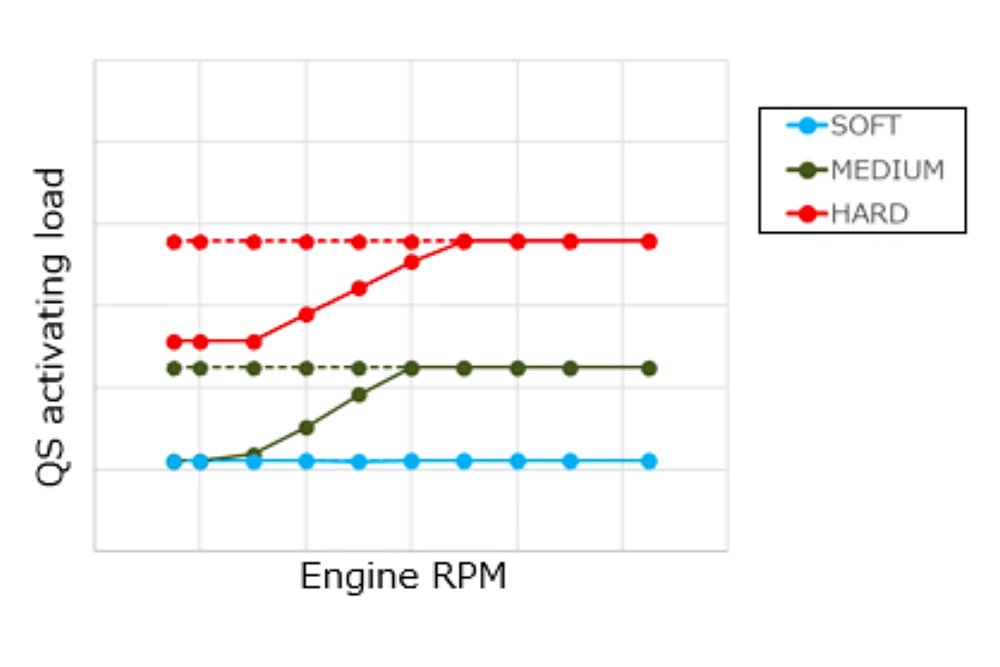
Is the CB750 Hornet's quickshifter the best I've ever used? No. Do all the ones I've used that are better come on motorcycles costing at least 50% more? Yes. I'd rate the quickshifter as good, not great. And here's the other quirk. Though the system is supposedly the same, the quickshifter on the CB1000 Hornet SP I rode the following day was noticeably smoother. Make of it what you will.
If you read past reviews of the CB750 Hornet from other markets, you'll see a few complaints about snatchy throttle response, but early reviews of the 2025 model suggested that had been resolved. Since this was obviously my first time with the bike, I'm happy to say I had no complaints about throttle response, either in Standard or Sport modes. As is usually the case, I personally preferred the Standard mode, which makes it easier to be smooth on the throttle, but if you prefer a more caffeinated feel, Sport is there for you. Either way, you get the same maximum power level. Only the nature of the delivery changes.
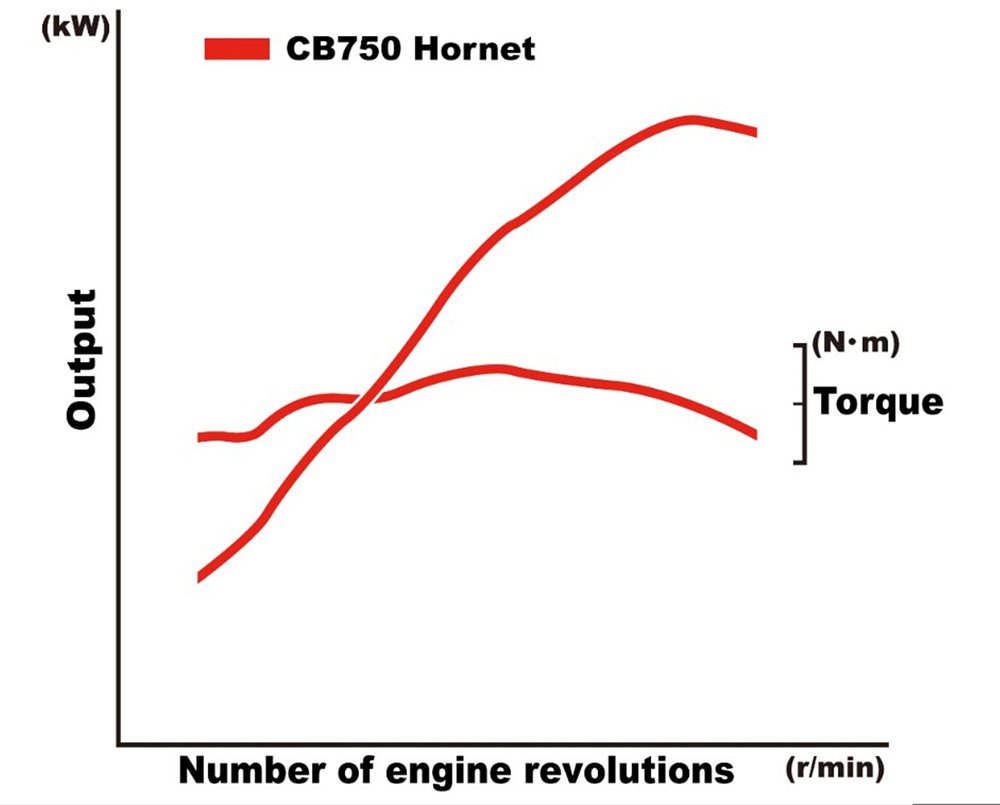
While the Honda guys talked about how Hornets have to have good mid-range, the CB750 just felt right to me when I kept it mostly above 6,000 rpm. There was no penalty for revving the engine, either, as it stayed smooth for a twin, and revving it just matches the fun-loving nature of this motorcycle.
The Honda guys said the versions of the 755 cc twin in the Hornet and Transalp are very similar, so I expect the Hornet in U.S. trim is producing somewhere in the 70-some horsepower range. That felt about right. American Honda does not typically release horsepower figures, and data out of Europe is different because of different regulations. European emissions standards are stricter but U.S. noise standards are tighter, so the engines aren't tuned the same.
So what's not to like?
It's hard to find complaints about the CB750 Hornet that don't feel unfair, given the intended mission and price point. Sure, there are features you could ask for. Cruise control? While I feel the Hornet is totally capable of long-distance duty, droning down the highway isn't the mission as Honda sees it. Adjustable suspension? Not common at this price point. Niceties such as steel braided brake lines? If you want 'em, you can always buy 'em yourself with the money you saved on the purchase price.
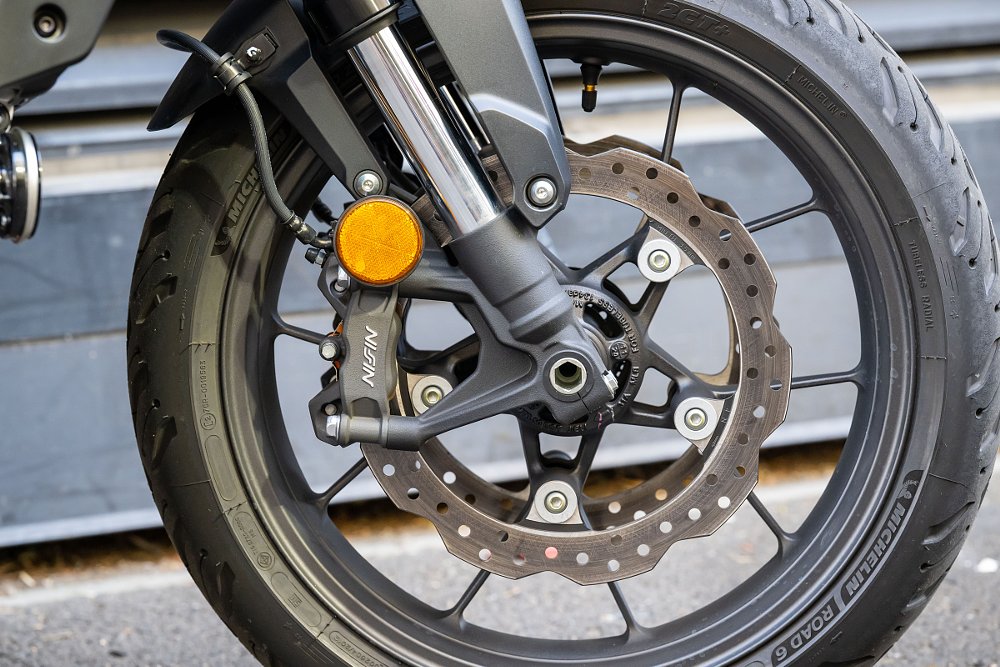
The Yamaha MT-07 is the most obvious target in this class and the Hornet measures up well. The Yamaha is a few pounds lighter and offers a bit of rear suspension adjustability, while the Honda brings the quickshifter and slightly more extensive electronics. And the Hornet's MSRP comes in $600 lower. Kawasaki has slashed the price of the Z650 by $900 to come in just under the Hornet, but you don't get several of the Honda's features. Suzuki's GSX-8S is more than a grand more expensive and even the beloved but long-unchanged SV650 lists at $50 more than the Hornet, with less power and fewer features.
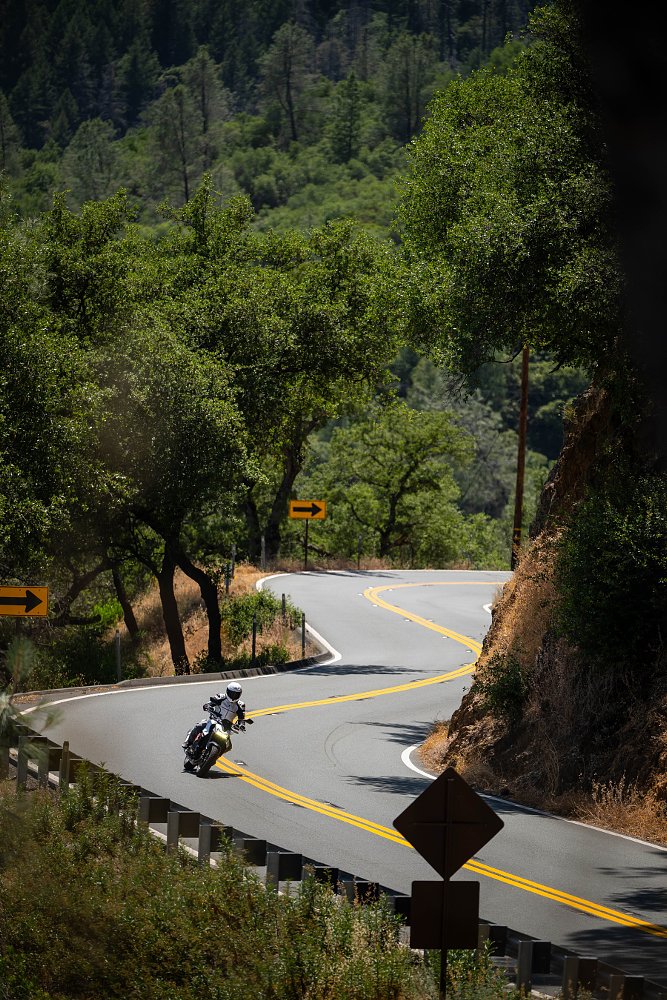
Should the kids have all the fun?
Honda is positioning the CB750 Hornet as a good choice for younger or newer riders, saying the engine output is "perfect for the less experienced rider" and "the machine was developed to attract younger riders looking for a serious move up." I don't disagree. The Hornet would probably be a good choice for a second motorcycle for a rider moving up from a beginner bike. The light weight, 31.3-inch seat height, and nimble handling make it a friendly and accommodating ride. But I would encourage riders who don't fit that younger, newer demographic not to cross the Hornet off their list of potential rides.
The Hornet won't appeal to riders out to earn their Iron Butt certificates, or mostly interested in slow group rides and polishing chrome, or determined to win benchracing spec-sheet competitions. But if you just enjoy the sensations of riding a motorcycle briskly, the Hornet is an appealing option, especially for an experienced rider who might have three or four motorcycles in the garage. A couple of the racing veterans in our group of testers were musing about the possibilities of turning the Hornet into a race bike.
I've already overused the word "nimble" in describing the CB750 Hornet, so now I'll risk the same with "fun-loving." It's a nifty motorcycle, and even though it's up against some equally fun-loving competition, the Hornet stacks up well with no glaring weaknesses. All for a price that won't sting, even if it is a Hornet.
| 2025 Honda CB750 Hornet | |
|---|---|
| Price (MSRP) | $7,999 |
| Engine | 755 cc, liquid-cooled, eight-valve, parallel twin |
|
Transmission, final drive |
Six-speed, chain |
| Claimed horsepower | N/A |
| Claimed torque | N/A |
| Frame | Steel diamond |
| Front suspension | 41 mm Showa Separate Function Front Fork Big Piston (SFF-BP) inverted fork; 5.1 inches of travel |
| Rear suspension | Showa shock, adjustable for preload; 5.1 inches of travel |
| Front brake | Dual Nissin four-piston calipers, 296 mm discs, with ABS |
| Rear brake | Single one-piston caliper, 240 mm disc, with ABS |
| Rake, trail | 25 degrees, 3.9 inches |
| Wheelbase | 55.9 inches |
| Seat height | 31.3 inches |
| Fuel capacity | 4.0 gallons |
| Tires |
Michelin Road 6*, 120/70R17 front, 160/60R17 rear (* - as tested; some will come with Dunlop Roadsport 2 tires) |
| Claimed weight | 422 pounds wet |
| Available | Now |
| Warranty | 12 months |
| More info | powersports.honda.com |

 Membership
Membership

